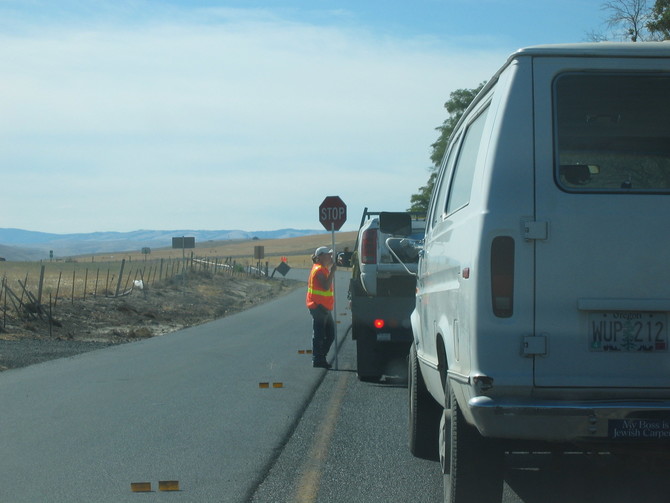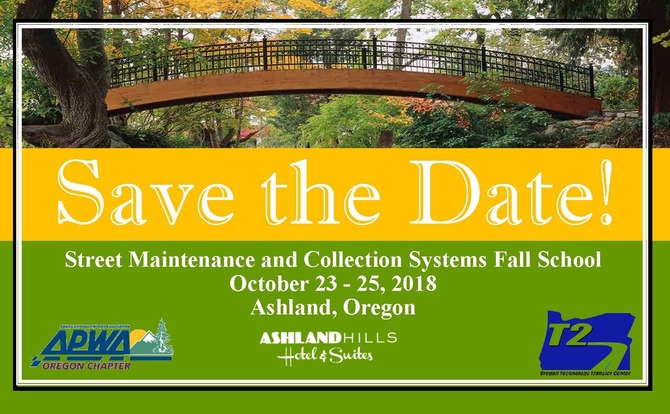|
Applying a pavement preservation treatment at the right time (when), on the right project (where), with quality materials and construction (how) is a critical investment strategy for optimizing infrastructure performance.
Whether a highway pavement is constructed using asphalt, concrete or a composite system, traffic loads and environmental elements will contribute to its deterioration over time. Pavement preservation treatments can slow this structural decline. When the right treatment is applied at the right time with quality materials and construction, these practices offer a proven, cost-effective approach to extending the overall service life of pavements and achieving smoother, safer roads with fewer costly repairs.
What is preservation?
Preservation includes work that is planned and performed to improve or sustain the condition of the transportation facility in a state of good repair. Preservation activities generally do not add capacity or structural value, but do restore the transportation facility’s overall condition.
Just as pavements differ, so do pavement preservation treatments. There is an array of different analyses, treatments, and construction methods that can help infrastructure owners achieve and sustain a desired state of good repair for their transportation facilities—despite tight budgets.
The When and Where component of this innovation, as part of the fourth round of Every Day Counts (EDC-4), supports preserving highway investments by managing transportation pavements proactively. The How component promotes quality construction and materials practices, including treatment options that apply to both flexible and rigid pavements.
When and Where
Historically, pavement preservation programs have focused on applying specific project treatments at specific locations. These projects demonstrated that the proper application of a treatment could extend the life of a pavement at a relatively low cost. However, not all projects were successful due to poor timing, inappropriate treatments, substandard materials, and inexperienced construction crews. As a result, the policy in many agencies today is to allow pavements to deteriorate until reconstruction is the only option, resulting in higher costs and more pavements in poor condition.
The mantra, “Right Road, Right Treatment, at the Right Time” was promoted from 1995–2005 to address these issues. Extensive training by the asphalt and concrete pavement industries and by the Federal Highway Administration (FHWA) at the time helped eliminate many of the construction issues and the improper uses for temporary fixes. While these practices were valuable to demonstrate the viability of preservation projects, they were project based and did not link to pavement management or other strategic processes.
This EDC-4 effort supports moving the preservation concept significantly forward. The focus today in transportation is on sustaining infrastructure through “whole-life” investments and quantifying the risks. Pavement preservation has a key role in managing pavements in these whole-life programs.
For example, a class of pavements with an expected life of 30 years will have several construct / operate / preserve / repair / restore alternatives and schedules over the expected lifecycle. Selection of a comprehensive strategy that includes preservation programs not only meets the performance expectations of the owners and users, but does so at a cost that is predictable and affordable. Making this evaluation a key part of pavement policy is an innovative approach to sustaining pavements in the future.
Under current federal statute on asset management (23 USC 119) and on performance management (23 USC 150), states are required to include consideration of pavement preservation as part of their long-term business practices that support federal funding. This consideration extends to evaluating the benefits and costs related to the lifecycle analysis for pavements. The EDC-4 pavement preservation team is focused on assisting state departments of transportation in this effort.
How
Pavements deteriorate as a result of many different forces, but the predominant factors affecting pavement performance are the vehicle loads and environmental elements they are exposed to over their lifetime. Today, most highway agencies accept that an effective pavement preservation program will slow down the rate of pavement deterioration, while also providing a safer, smoother ride to the traveling public. Pavement preservation programs based on the 3Rs—right treatment, right pavement, and right time—have been proven to extend pavement life while saving money.
One obstacle to successful pavement preservation is the impact that treatment failures can have on an entire program. Whether it is a failed patch, stone flying off a chip seal, or a microsurfacing that peels off because it did not set, even a single failure and the associated damages can set back an agency’s program for many years. However, most early failures can be attributed to a breakdown in some part of the construction process, such as the materials, site preparation, or placement practices, and as such are avoidable.
EDC-4 is promoting quality construction and materials practices that apply to both flexible and rigid pavements. For flexible pavements these include using improved specifications for thin asphalt surfacings such as chip seals, scrub seals, slurry seals, microsurfacing, and ultrathin bonded wearing courses; following improved construction practices; and using the right equipment to place these treatments. Rigid pavement strategies include the rapid retrofitting of dowel bars to reduce future faulting; the use of new, fast-setting partial- and full-depth patching materials to create a long-lasting surface; advanced pavement removal techniques to accelerate patching construction times; and advancements in diamond grinding that contribute to smoother and quieter pavement surfaces with enhanced friction.
Far too often, the past response to a construction failure has been to introduce bans or moratoriums on using treatments that have otherwise been proven effective. By following the best practices for materials selection and construction practices, pavement preservation will be less disruptive and safer while also eliminating much of the “fix-the-fix” problems endemic to many conventional pavement repair and rehabilitation techniques. Improved construction practices and the associated reduction in construction-related failures allow agencies to continue to use treatments that are proven to be effective, enabling them to realize the benefits of these techniques.
Information reprinted with permission from the FHWA. Full article available at https://www.fhwa.dot.gov/innovation/everydaycounts/edc_4/pavement.cfm
 Personnel Changes
Don Smith has been hired on as our new Circuit Rider. He comes to us with a 31-year career with ODOT. During his time with ODOT, he worked in
maintenance, maintenance management, permits, and as a safety manager. This diverse background has given Don a
unique perspective on the safety challenges that employees and supervisors face
every day. Don brings with him a
background in OSHA as well as being the subject matter expert and master
trainer on work zone traffic control in Oregon.
Join us in welcoming Don to the T2 Center!
|
 |
|
Washington County Roads Scholars
Front to back and left to right
Juan Cortez and Laurie Whitley, Brett Hansen, Tony Barnett and Jim Peters, Jeff Peck and Juston Bell, Deb Dalenberg, Ben Farnsworth and Brian Schmitt
|
 |
|
Washington County Roads Scholars
left to right
Dennis Pittman, Blake Little, Will Duyck, April Okazaki and
Israel Valadez
|
Josephine County Level 2 Roads Scholars
David Rubrecht, Public Works Superintendent and Dan Shipley, Operations Supervisor
|
|
 |
Josephine County Level 1 Roads Scholars
Ray Osipovich and Pat Hartnell
|
|
 |
 By Tony Jobanek
The conflict between pedestrians
and vehicle traffic has been a dangerous relationship since the advent of the
public street. As we move into the
Spring and Summer season it becomes a more prevalent safety concern. The number of pedestrians walking along and
across streets increases as well as the summer crush of vehicles heading to
spots unknown on vacation and family trips across town as schools let out for
the summer.
You can do your part as both a
driver and pedestrian to ensure your safety and the safety of those around you
by following some basic rules.
As a pedestrian,
remember that you are very vulnerable to injury by those multi-ton vehicles
prowling the streets of your jurisdiction.
What can you do to be safe?
1.
Pay attention
when walking! Never walk near or on a
street or right of way while using headphones or cell phone as they will mask
the sounds around you and divert your attention from your surroundings.
2.
Never step
into a crosswalk or right of way without making eye contact with the driver
regardless of whether the pedestrian signal indicates Walk or Don’t walk. There is a definite physics disadvantage
when coming into contact with a motor vehicle or bicycle. What good does it do for you have the right
of way and yet be possibly being injured or killed.
3.
Remember! As
pedestrians always be:
- Aware
- Sober
- Attentive
- Visible
- Predictable
- Follow rules
As a Driver, remember to follow all the rules related to driving near
pedestrians.
1.
You must stop and remain stopped for a pedestrian
crossing at a crosswalk:
- In the
lane in which your vehicle is traveling or in a lane next to the lane in which
your vehicle is traveling;
- In the
lane into which your vehicle is turning;
- In a lane
adjacent to the lane into which your vehicle is turning, if you are making a
turn at an intersection that does not have a traffic signal;
- Less than
six feet from the lane into which your vehicle is turning, if you are making a turn
at an intersection that has a traffic signal.
2.
When driving near school zones:
- You must stop at a school crosswalk where there is a
traffic patrol member and the traffic patrol member signals you to stop.
- Be particularly alert at all times for children and
pedestrians in a school zone.
- Be aware of the signs or flashing lights that warn of
an approaching school or a school crossing.
- School hours are not the only time children are
present in and around schools.
3. Remember as Drivers
near pedestrians we must:
-
Follow all driving rules
- Be Extra cautious- turning, especially when near
children and those with disabilities
- Be Slow and patient when pedestrians are in the crosswalk
Whether you are a pedestrian or a driver,
together we can reduce the many risks that can occur between vehicles and
pedestrians by focusing on our surroundings and following these simple
guidelines and driving rules. Enjoy your
trips this Spring and Summer and don’t forget to drive and walk like your life
depends on it!
|
Improving the Maintenance of Signalized Intersections and Asset Management with Automated Traffic Signal Performance Measures
Wednesday, April 25, 2018 1:00 – 2:30 PM ET
This webinar will feature examples of how agencies are using Automated Traffic Signal Performance Measures (ATSPM) to improve the maintenance and asset management of their traffic signal systems. ATSPM visualizations allow technicians and traffic engineers to view an entire day’s worth of detection information, phase terminations, and other traffic signal data at one time. Using these visualizations, agency staff can quickly spot detector failures, stuck pedestrian actuations, and other maintenance issues that negatively affect traffic signal performance.
This webinar is part of a series that will familiarize participants with the technical aspects of ATSPMs, how they fit into an objectives and performance based management framework, and implementation options that fit a range of agency capability, and infrastructure situation. The FHWA does not endorse or promote specific products that are presented within the context of these webinars.
Register at https://collaboration.fhwa.dot.gov/dot/fhwa/WC/Lists/Seminars/DispForm.aspx?ID=1659
 Drugs are no longer just a risk to the addict and the people they steal from to finance their addiction. The new chemical cocktails they are using, and the discarded bags and other paraphernalia can kill us on contact. So, much like we learned the dangers of syringes in the ‘70s and ‘80s and crystal methamphetamine labs in the 90s, we need to be aware of these new heroin concoctions and how what is left behind can kill us.
Unfortunately, the new heroin cocktails require that any of us who engage in roadside or park maintenance, repair, or cleanup learn about these quickly escalating dangers. Morphine is powerful stuff; many of us have experienced it from a medical professional after a traumatic incident or surgery. Heroin is generally two to four times as powerful as morphine. Fentanyl is fifty times more powerful than morphine and now it is routinely a component of street heroin. U-47700 (often called “Pink” on the streets) is yet another opioid that is 7-8 times the potency of morphine. Carfentanyl is 10,000 times more powerful than morphine and is intended as a tranquilizer for large animals (think elephants); yet, that too is often part of the heroin cocktail found on the streets today.
“Gray Death” is a generic term used by first responders across the country for a troubling new cocktail of these components, and although there is no specific recipe, it is generally heroin mixed with fentanyl, U-47700, and carfentanyl. First responders (law enforcement and paramedics) have overdosed and even died just by getting the material on their clothes.
As operations and maintenance personnel, you don’t need to know all of this, but you do need to know what you don’t know. And what you don’t know is what’s in that stamp bag. So leave it alone. Mark it with a cone or caution tape. Stay away from it, and call it in to someone who knows how to handle unknown chemical hazards. You may have a standard operating procedure already and now is a good time to review it. If not, you can always call your local or state police.
Just like needles and meth labs and all the other trappings of illegal drug use, we all must elevate our understanding of the dangers and include these new precautions in our training.
Reprinted with permission from the Delaware LTAP Center. Originally printed in their Info-Change newsletter Winter 2017 issue.
|
 As a flagger it is important to be alert to approaching
vehicles from both directions and be able to warn workers of any errant
vehicles. In this picture it appears as
though the flagger is more interested in the conversation with the first
vehicle rather than paying attention to their surroundings and oncoming
vehicles. A Reminder for flaggers:
- Flagger
stations shall be located such that approaching road users will have sufficient
sight distance to be able to stop at the intended stopping point
- As a
flagger you should be able to identify an unobstructed escape route to avoid
errant vehicles
- Stand
within the closed lane or on the shoulder.
- After
stopping the first few vehicles, flaggers may move from the shoulder to near
centerline to be more visible to approaching traffic. Preference for safety is
that the flagger stays on the shoulder.
For more information on Flagging refer to Chapter 3 of the
Oregon Temporary Traffic Control Handbook.
 NEPA Indirect and Cumulative Impact Analysis
This course, recommended for 2 PDHs, provides a step-by-step overview of indirect and cumulative impact analyses. We discuss the difference between indirect and cumulative impact and review common terms used in both processes. This course is available for free through April 2018!
The Federal Highway Administration (FHWA) and the Council on Environmental Quality (CEQ) regulations require that potential direct, indirect, and cumulative environmental impacts are considered to determine significance during the NEPA process.
Upon completion of this course, participants will be able to:
- Describe the difference between direct and indirect impacts;
- List the factors to consider in determining whether an action may be excluded from consideration;
- Describe the seven-step indirect impact analysis process; and
- Describe the eight-step cumulative impacts analysis process.
View Course
NEPA Overview Series
This six-part series, recommended for a total of 6 PDHs, covers various aspects of the NEPA process, which requires federal agencies to assess the environmental effects of their proposed actions prior to making decisions. Using the NEPA process, agencies evaluate the environmental and related social and economic effects of their proposed actions.
The following courses make up the series:
- Determining Transportation Needs—available for free through April 2018!
- Evaluating Sub-Regional and Local Transportation Needs
- Launching a Project
- Refining Alternatives
- Preparing and Reviewing NEPA Documents
- Final Stages and Re-evaluation
View Series
|
WZITS Implementation Tool Now Available
The Work Zone Intelligent Transportation Systems (WZITS)
Implementation Tool, a software companion to the Work Zone ITS
Implementation Guide (FHWA-HOP-14-008) is now available.
The tool is designed to support enhanced data collection and the
quantitative assessments necessary to determine the suitability of ITS
solutions. It is intended for agency use to support decision making regarding
the selection, design, procurement, and evaluation of ITS systems for
construction and maintenance projects.
Access
the tool here.
For more information, contact Jawad.Paracha@dot.gov.

|